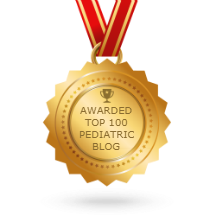The Pediatric Insider
© 2013 Roy Benaroch, MD
The AmericanAcademy Otolaryngology – Head and Neck Surgery (AAO-HNS, often abbreviated “ENTs”) has come out with their official, evidence-based guide to one of the most common medical procedures in children: tympanostomy tubes, or “ear tubes”. It’s long, it’s detailed, and it’s well-referenced, and it ought to help guide ENTs, family docs, and pediatricians to help families make good decisions about who needs tubes, when they ought to be done, and how to take care of them.
The document includes solid background info on the health care burden of ear infections, and the risks and benefits of tubes. What I’m going to concentrate on here is the twelve “action” statements that they’ve come up with to guide health care decisions. All of these I’m paraphrasing from the statement—take a look there for references supporting these statements.
The first five statements are about children with what’s called “OME”, for “otitis media with effusion.” This is when there’s clear, uninfected fluid behind the eardrum. OME does not cause pain or fever or really other symptoms, though may be associated with some hearing loss. OME should not be treated with antibiotics—it is not an infection, and antibiotics will not help. It’s typically called “fluid in the ear” or “fluid behind the eardrum.”
1. Do not place tubes for uninfected fluid behind the eardrums (OME) of less than three months duration. Uninfected fluid just sits there and causes minimal symptoms (perhaps some blunted hearing), and it can be safely observed for at least 3 or more months before surgical intervention is even considered.
2. If fluid (OME) persists > 3 months, do a hearing test prior to surgery, or when surgery is considered. The reason to “fix” OME is to correct a possible hearing deficit; if there is no deficit, tubes are not generally needed. You have to check, first.
3. If there is fluid (OME) > 3 months plus hearing loss, consider placing tubes.
4. If there is fluid (OME) > 3 months plus other symptoms like school issues, balance problems, ear discomfort, or “reduced quality of life”, tubes can be considered as an option. This is not a recommendation—just an “option”, because there is very little evidence that tubes will fix these problems.
5. If fluid (OME) lasts > 3 months, it ought to be monitored at regular intervals to make sure hearing remains normal and that there are no other medical problems being caused by the fluid.
The next three statements are about “AOM”, or acute otitis media, defined by infected fluid behind the eardrum. It’s red, it’s bulging and distorted, and it causes ear pain and other symptoms. This is what’s commonly called an “ear infection”.
The statement defines “recurrent AOM” as 3 or more proven ear infections in the last 6 months, or 4 in the last 12 months (including at least 1 in the last 6 months.)
6. Clinicians should not place tubes for recurrent AOM if there is not fluid behind the ear at the time of the assessment. This is a little bit of a slap at pediatricians and the rest of us who diagnose ear infections—basically, it says that the ear specialist has to see for themselves that there is at least one infection before doing surgery. I agree with this. Ear infections can be tricky to see and are frequently over-diagnosed. If Junior isn’t really having ear infections, surgery is not going to help.
7. Ear tubes (in both ears) should be offered for recurrent AOM who have middle ear disease at the time of the evaluation. Note that “offer” is not a very strong recommendation—there is limited evidence that tubes help prevent AOM, and what evidence there is shows only a modest effect.
The next two statements refer to children who have special medical needs:
8. Clinicians ought to consider the big picture—including what children are at risk for further ear infections or developmental challenges related to hearing loss. Children with anatomic issues (eg, cleft lip), or baseline cognitive, developmental, or behavioral issues are at higher risk for complications from AOM, so may benefit from more-aggressive therapy.
9. In children “at risk” per statement 8, consider tubes when fluid lasts for three months or longer.
And, last, there are three miscellaneous statements:
10. Clinicians should teach families about tubes, especially about the expected duration of function, after-care, and potential for complications.
11. If there is drainage from tubes, it ought to be initially treated with eardrops instead of oral antibiotics.
12. Children with tubes should not be routinely discouraged from water sports, and need no routine ways to prevent water from getting into their ears. That means no earplugs, no headbands—just go swim and enjoy yourself.
So: a lot of information. The most important points are about fluid behind the eardrum. If it is uninfected, it can safely be monitored for at least three months before even considering tubes; even then, tubes really only should be pursued if there is hearing loss or a high probability of complications. If there is infected fluid behind the eardrums, tubes should only be considered if there are documented recurrent episodes, at least three in the last six months. And: ENTs and pediatricians ought to stop encouraging earplugs and water restrictions, because those measures do not help.
For those of you interested in the details, the full report is quite detailed and referenced—and can probably teach most physicians quite a bit about the best way to manage common ear problems. Tubes can help, sometimes, but they’re not always needed, and ought to be used only when they’re likely to help.
More about ears and infections:
The Earwax Manifesto
How many ear infections are too many?
How to prevent ear infections
The weekend ear pain action plan – what to do when your child’s ear hurts
















Recent Comments